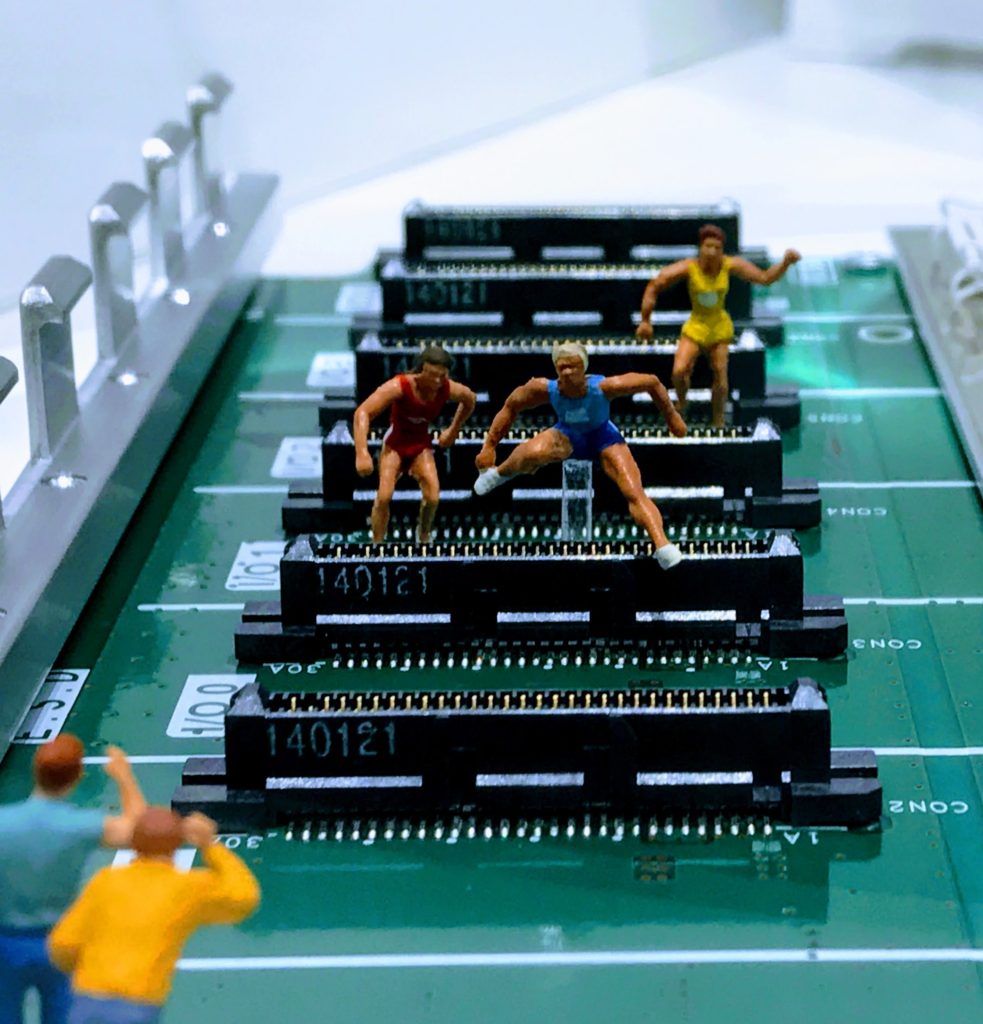How accurate are chip timing systems? And which one should our race use?

Chips, transponders, RFID, active, passive…where do I start?
Chip timing…whew! It took CJ Sports Timing 10 years of trying various systems to come up with one whose accuracy and reliability we trust.
Thankfully, we have several different options (and pricing levels) to level up your race. Following is a list of the chip timing technologies available and their level of accuracy.
Passive chip timing for running:
Example: the throw-away ones on the back of a bib
These are averaging around 1/10th of a second accuracy. For mass start events, these are just fine. But if you have an elite category in your race or a measured course where you expect records to be set, you are going to want those athletes wearing active transponders or backing up your finish with an approved photosystem.
Passive chip timing for cycling:
These can vary from 1/10th (.1) of a second to 2/100th (.02) accuracy. They are typically used for mass start events at slower speeds (less than 15mph). Again, fine for mass start events, but not accurate enough for time trial events. What we mean by time trial events are events where the rider is racing against the clock where a measured start time happens such as on the road, a downhill mountain bike race, or an enduro type event.
Active chip timing:
There are several of these available and their accuracy is averaging around 1/100th (.01) of a second. These are the ones that you wear on an ankle or attached to a bike frame. They are also more accurate at higher speeds (around 45mph). You might see these more in time trial type events or at multi-stage or multi-sport events.
Moto transponders:
These are active transponders that work at much higher speeds with higher accuracy. These average around 1/1000 (.001) of a second at speeds averaging up to 150mph. These are typically found in race cars or motorcycles but are finding their way more and more into road bicycling events because of their accuracy.
With chip timing, it’s still critical to have some type of back up system. Even something as easy as a person with a clipboard writing numbers down or reading them into their phone or a tape recorder is better than nothing if the elements conspire against you.
Check out more information about how we utilize Chip Timing with our other timing technology to provide you results that are accurate and fast.